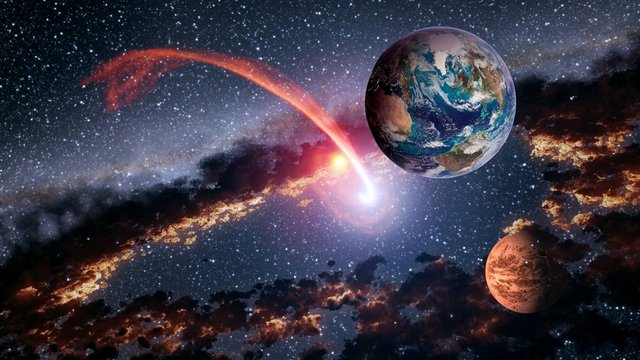They find the brightest object of the dawn of the universe
They find the brightest object of the dawn of the universe
It is a hyperbrighting quasar that expels plasma and could shed light on the early universe.

A team of astronomers at the Carnegie Institute in Washington, USA, has found the brightest goal ever discovered in the early universe, 13 billion light-years away. It is a quasar from a time when our universe was only 7% of its current age.
A quasar is a galaxy that orbits a supermassive black hole that actively feeds on material. The light and radio emissions we see are caused by the material around the black hole, called the accretion disk. This disk contains dust and gas rotating at incredible speeds -like the water that goes down a drain-, generating an immense friction when attracted by the massive gravitational force of the central black hole. As they consume matter, it expels powerful jets of plasma at almost the speed of light.
These jets are extremely bright in the radio frequency spectrum. It was precisely this signal emanating from the recently discovered quasar, called PSO J352.4034-15.3373 (P352-15 for short), which was collected by the Very Long Baseline Array radio telescope.
"There is a shortage of powerful radio transmitters known from the early universe and this is the most brilliant radio quasar at that time by a factor of 10," said astrophysicist Eduardo Bañados, leader of the study to The Astrophysical Journal that collects the job.
The observations of the aforementioned radio telescope showed that the quasar was divided into three different components, for which two possible interpretations have been exposed. The first is that the black hole is at one end, and the other two components are parts of a single jet. The second theory is that the black hole is in the middle, with a jet on each side.
According to the optical telescopes, which show the quasar in visible light, the position of the black hole is aligned with one of the final components, which makes the first interpretation the most likely. This means that, by studying and analyzing the two parts of the jet, astrophysicists can measure how fast it is expanding.
On the other hand, if the black hole turns out to be in the center, it would represent that the jets are much smaller, which would show a much younger object, or one that is embedded in dense material that is slowing down the jets.
It will be necessary to conduct more investigations to determine which of the two scenarios is the real one. Meanwhile, P352-15 remains an object of great value to scientists.
The potential of this quasar
It is not as old as J1342 + 0928, a quasar of when the universe barely had 5% of its current age, but the light of quasars can be used to study the intergalactic medium. This is because the hydrogen that crosses its long journey to Earth changes the spectrum of light; recently, a quasar was used in this way to find the baryonic matter that was missing in the space between the galaxies.
"We are seeing P352-15 as it was when the universe was less than 1 billion years old - this is almost the end of a period when the first stars and galaxies were re-ionizing the neutral hydrogen atoms that impregnated intergalactic space. This quasar and its great distance make it a unique tool to study the conditions and processes that prevailed in the first galaxies in the universe, "explains astrophysicist Chris Carilli of the National Radio Astronomy Observatory.
Thus, the quasar, whose material moves at almost the speed of light, could help astronomers to better understand the time when the first stars of the universe formed and began to group.
"The jet of this quasar could serve as an important calibration tool to help future projects penetrate the dark ages and perhaps reveal how the first galaxies were born," said Bañados.
Keep up with the good work .